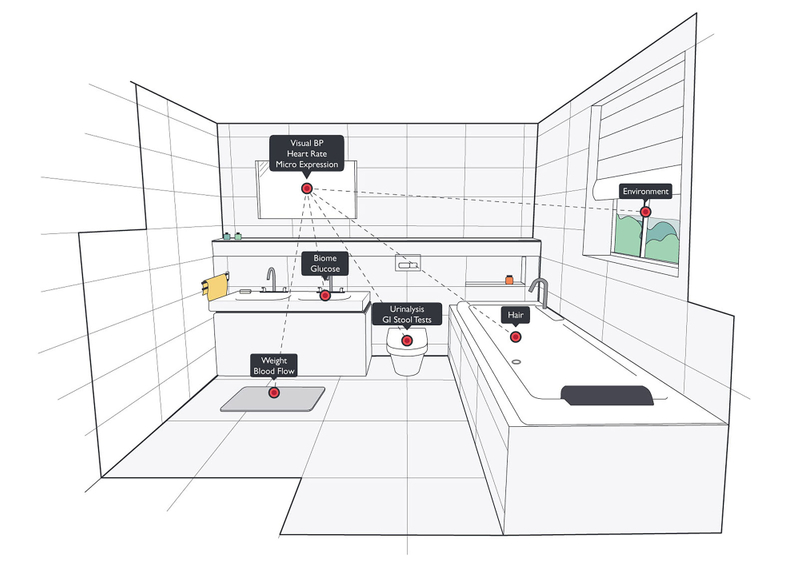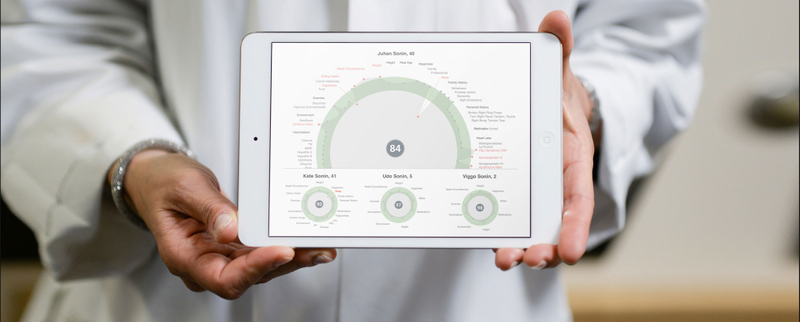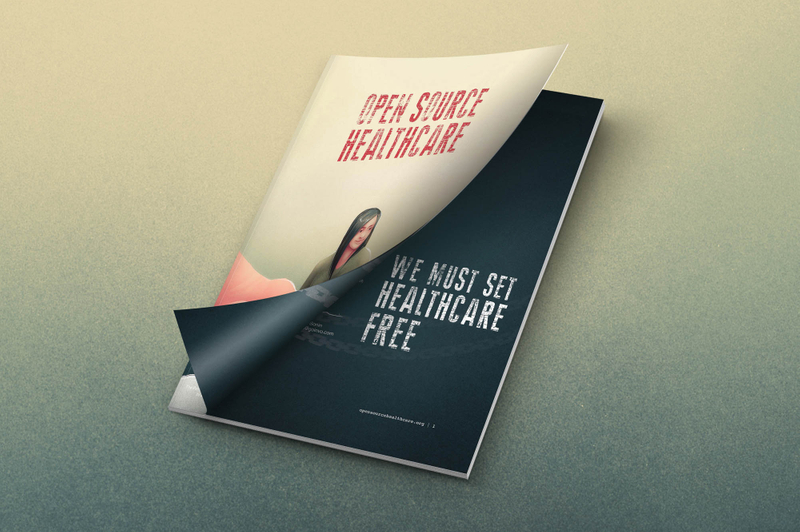Your Food in Code
for InsideTracker
Problem
How does InsideTracker show your bioassay information and resulting nutrition needs?
... so it's not an IEEE paper
... so it's beautifully shown (versus told in TLDR)
... so it's a service one can grow into, from beginner to expert
... so it actually has better health outcomes.
How does the InsideTracker food engine help patients pick the right food, at the right time, for their best health?
Solution
Our project focused on visualizing the bioassay results and food suggestions that fill nutritional gaps in a patient's weekly routine.
Results
We designed an easy-to-read return of information service for your blood work and nutrition profile that works for your first blood draw to a series of blood draws over time. We also delivered the first nutrition decision support service that fed suggestions from the InsideTracker science team to the patient food recommendation service.
Time: 1.25 designers for 2 months (in 2010 and 2020)
Tags: Precision Medicine and Genomics, Patient Engagement
The Problem with Food
We have a hard time understanding a fundamental part of life: how to eat well.
We know the holy trinity of 1) eat food, 2) not too much, and 3) mostly plants. Thank you Michael Pollan. We also intellectually understand that Swiss chocolate isn't good for you. With overwhelming choice, at least in parts of the United States, we have a hard time eating well. Lastly, it's hard to grasp the invisible processes happening inside our bodies and how they affect you.
Fighting Big Food
The food industry adds to the chaos by manufacturing calories that appeal to the species with sugary, salty, and fatty combinations. Big Food also obfuscates good nutritional practices by interfering with food pyramid governance, advertising sugary treats to our youngest residents, plying local governments to accept pizza as a vegetable in school lunches, and participating in corporate welfare by receiving subsidies for growing cheap calories such as sugar, corn, and milk (which should not be everyday human feed). Knowing what food is right for your body, at a detailed level, is a maze.
Insights & Recommendations
Nutrition Science is... emerging
Nutrition science rightly advocates for Michael Pollan's trio. And yet, personalized food choices, generated for you, based on chemistry, DNA, activity, biome, and goals are only just arriving based on peer-reviewed research.
InsideTracker is a quantified food and nutrition service, creating a hard science-based food engine, which alongside your blood work and lifestyle, can synthesize a hyper-personalized food plan.
Show the results, beautifully
Nutrition science is complicated. How foods interact with your chemistry and what food our particular bodies and minds need, should be shown in straightforward methods. It shouldn’t take a Masters degree in Nutrition to interpret your results.
Data let us live aware of our health. For example, when we are messaged that ice cream is high in fat, high in sugar, and high in cow's milk, we process that as "Okay, that's bad, but so what?" As soon as that message becomes quantified, and not by keeping annoying food diaries and looking up the nutrition content of every bite or sip, we get religion. Data take us by the shoulders and shake. We notice that eating this way, and continuing to do so, has taken days, or even a few years, off our precious life expectancy. That is when the entire world changes. But not before.
From Bathroom to Healthroom
Solution
Straight-forward information design tops
The reason patients use software like InsideTracker is to get the data they want, in the right way, with as little delay or distraction as possible. The patient's mission is to understand the bio and nutrition data, be the data, and figure out how to make that data not just be, but to make a difference in their health outcomes.
Sequencing detailed results, step-by-step, is easier to digest
Bioassay results combined with precision nutrition advice are data rich. Revealing more detail as the patient understands more and more about their health and nutrition is a proven design technique. By deferring some advanced features to secondary actions (or screens), makes learning the service easier and makes errors less frequent.
Results
10 years in the wild
The bioassay results have resonated with InsideTracker patients as an easy-to-understand return of information visualization. The designed technique has been live and in-use for a decade!
Round 2, a Decade Later
Good design repeats itself
10 years later and a 10x bigger company, InsideTracker asked for another design bump. This time, the business wanted to grow services around health goals and everyday habits.
Key Question:
How do we assist the patient with habit-forming goals when it comes to food choices, eating, and daily activities?
Insights and recommendations
Blood draws occur yearly. Food choices happen daily.
A nutrition agent, working on your behalf to organize your food life and better your health, was a new avenue for InsideTracker. By incorporating feedback from patients, stakeholders, scientists, and engineers, a software model for behavior and precision nutrition was created. Early concepts for the digital manifestation of the activity model were designed (ie., how does InsideTracker's nutrition agent behave on your phone and works with you). These concepts fed product and development teams next iteration of the software.
Results
A Design Injection
One objective often desired by repeat customers is to stimulate the product and executive teams with new concepts, push new areas of personal health, and evolve the business strategy to better align with patient needs. Most of our business is repeat: we built trust with company leaders, scientists, engineers, and product teams by delivering and shipping compelling healthcare design... over and over again.
Here's to eating right, based on a new level of precision!


